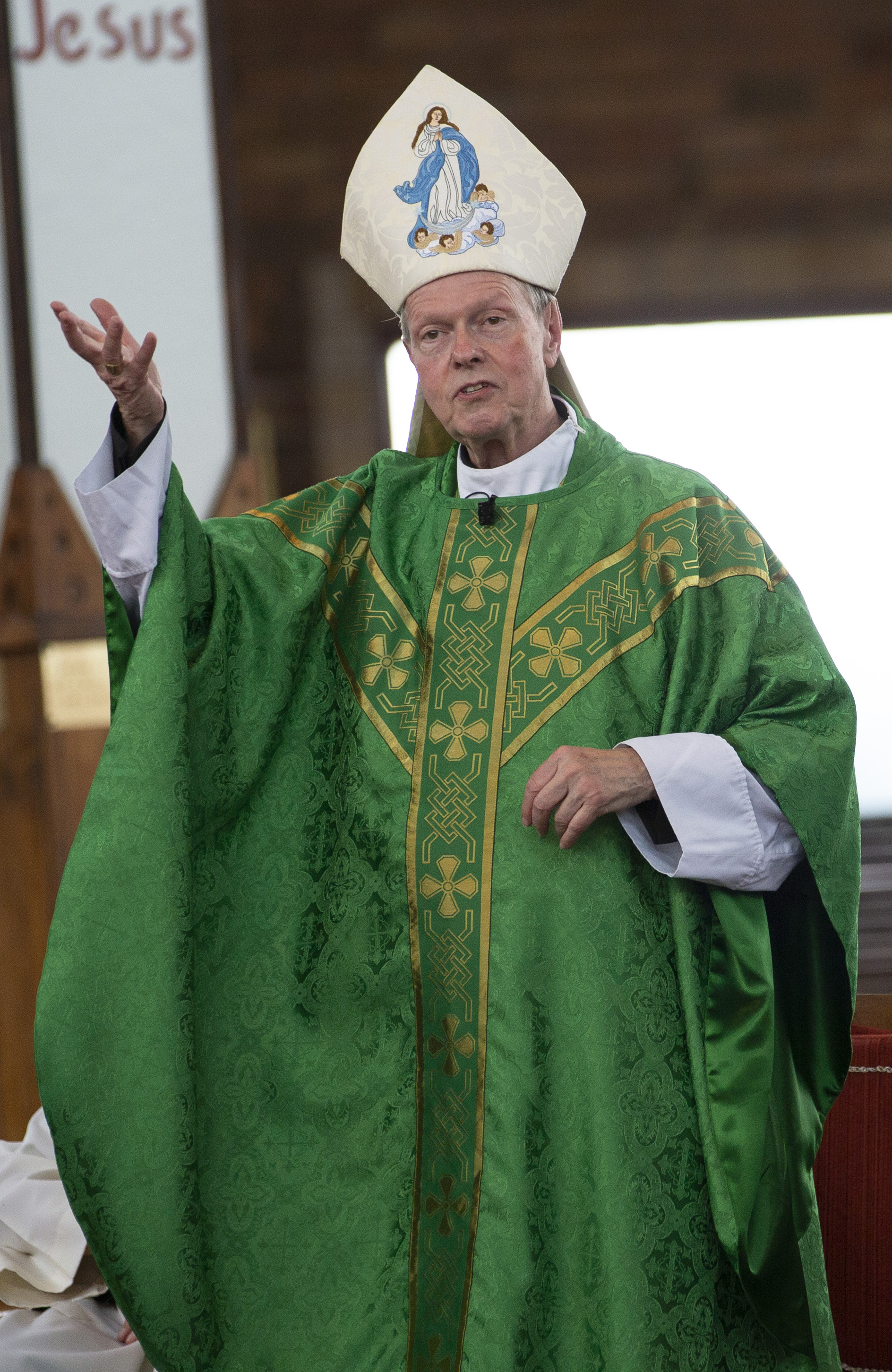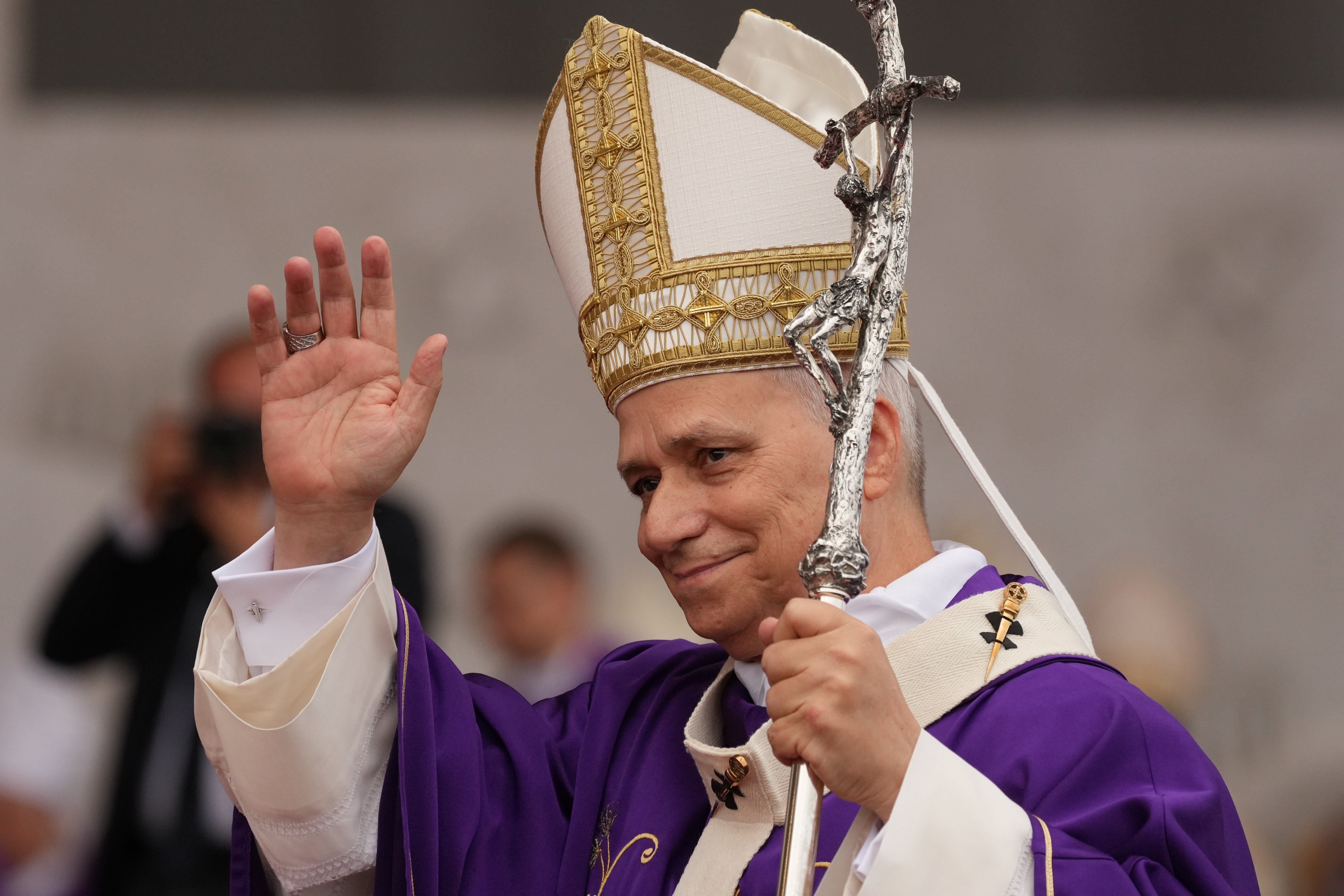June 18, 2019 at 7:20 p.m.
Nothing is more central to our faith than Jesus — to believe God loves us in him — personally. After all, we call ourselves Christians! The Father sent his only-begotten Son into the world for one reason: to announce his love for every human being, to show it by going into the depths of where love is lacking, and to lift us up, in his Holy Spirit, the heart of God’s love.
To be true to its mission, nothing is more important for the Church than to announce that message, to bear witness in the world about this truth and its life-transforming power to touch, to heal and to renew every heart open to accept God’s love. This is the source of inner peace, of recovery from a legacy of sin, whether personal or social, present or historical.
In this context I offer my reflections following the spring meeting of U.S. Bishops (USCCB) in Baltimore last week (June 10-13). On the up side, to resolve any question whether the Charter for the Protection of Children and Young People, first adopted in Dallas (2002), be applied to bishops, we voted overwhelmingly to hold ourselves accountable for instances of sexual abuse of children and vulnerable persons, sexual misconduct, or intentional mishandling of such cases.
We committed firmly to the full engagement of lay professional experts in all cases against bishops, already in practice with other clergy, and in language ensuring the universal principles outlined in Vos Estis, the recent motu proprio of Pope Francis, are normative in the United States. We also established a new, independent (third party) mechanism for reporting such cases.
On a sobering note, general frustration and anger remain about the slow pace of change and a sense that some bishops do not “get it.” Survivors and many others want more from leadership than to manage or try to “fix” things. Many seek to be heard more and even want to be involved in a process of change and accompaniment.
Most incidents of abuse surfacing now occurred many decades ago, mostly between 1965 and 1985. The environment within the U.S. Catholic Church today is among the world’s safest. Reports of current, ongoing sexual abuse of minors by clergy are down drastically in the last two or three decades. Yet 8 out 10 Americans, according to a recent Pew survey, believe it to be an “ongoing problem.”
Another source of frustration is that everyone wishes the investigation of former Cardinal McCarrick and, recently, Archbishop Bransfield (West Virginia) could go faster. We look forward to the full report that the Holy See has promised. More bishop misconduct may surface with improved reporting and investigatory protocols. With the Child Victims Act (CVA) in New York going into effect Aug. 14, more revelations of historical abuse could stoke fears it is ongoing. Stories may allege “cover ups,” presuming such cases were known internally and deliberately ignored or suppressed. Any malicious intent, in justice, should be proven through due process before forming conclusions. Whether instances might have been known, had better reporting and investigatory measures been in place, is also a fair question. Awareness and vigilance are much greater today, especially given protocols broadly in place since the 2002 Charter, though there is much room for improvement.
Besides investigations by civil authorities in a growing number of states, many bishops have taken initiatives to ensure that circumstances that failed to surface or address abuse during their peak (1965-85) are no longer present. An independent Task Force, with renowned lay experts, that I announced on April 11 is specifically charged with this mission. But for all of such measures to reform administrative protocols, everyone wonders what the real roots of the “crisis” are. How could it happen in a Church whose prime mission is to call sinners away from sin, believe the good news, and be holy?
We can agree on one thing: some clergy members have scandalously not lived up to that call to be holy. How can any pastor of souls, while clinging to sin, call others to be holy? As more accounts surface, we recoil in anger, confusion, frustration and even disgust, to the point of leaving the support and practice of the faith. And for those who have survived abuse, painful memories persist, often daily. The personal crisis does not subside. As many more become aware of traumatic accounts by courageous survivors, we are ourselves shaken. To that extent we, too, feel in crisis.
“Crisis” can be understood in another way, however. In its Greek origins, it means a time for decision-making. Rather than a time for panic and jumping ship, it is a time to choose, a challenge to unite and right the course. For us Catholic Christians, it is a call to go to the foundation of our faith, trust in Jesus, and being holy in him.
The real “crisis” then – or “time to choose” – is a call from Jesus to personal holiness in him. Where do you stand? We need holy bishops, holy priests, holy deacons, holy laypeople. The publication of my pastoral letter this week (“This is my Body”), on the Feast of the Solemnity of the Body and Blood of Christ, is directly related to this real “crisis.” In my heart and soul, I believe it is at the root of the challenges we face. Fallen humanity must go to the only true source of salvation, mercy and healing: our Lord and Savior, Jesus Christ. His Eucharistic Presence, in particular, is the way he himself has chosen to be with us for all time, in all seasons, and in any crisis.
The real crisis we are facing is a crisis of faith. This includes suffering survivors, of course, their families and friends — some of whom are also clergy — but all of the faithful. Not only the “people-in-the pews,” but also those termed the “nones,” those not always “in the pews,” at different stages in our spiritual journey. Jesus wants to come and dwell in all our hearts. What we feel as anger and frustration may be a protective “cover up” for the pain and disillusionment of being betrayed again by those we rightfully look up to for leadership. We look for leaders who don’t just tell us what the Gospel teaches, but who live the Gospel by their example, sacrifice and holiness of life.
So many of our parish leaders strive to be these holy pastors who love and guide their sheep to the point of laying down their lives for them. I am deeply grateful to them and can only imagine the pain and frustration they feel, trying to console their people. I pray the priestly prayer of Jesus himself who, before he died, prayed for those who would lead his flock (see the Gospel of St. John, chapter 17). Pray on it — slowly.
Above all, without neglecting the norms and reforms, we need leadership by example, holiness of life and the love that can only come from God’s redeeming grace. We need Jesus in and through the sacramental life of the Church. My favorite and constant prayer is, “Lord Jesus, I trust in you.” Without him I can do nothing. Without his love and trust in his love, how can I love? “If I speak in human and angelic tongues, but do not have love, I am a resounding gong or a clashing cymbal” (1 Cor 13:1). But with trust in God’s love, all things are possible.
“For nothing will be impossible with God” (Luke 1:37).
facebook.com/AlbanyBishopEd
@AlbBishopEd
- US strikes Nigeria targeting Islamic extremists to ‘stop the slaughtering of Christians,’ says Trump
- 2025 brought new pope, new president, and immigration as key issue
- Linger in contemplation at the manger with the Holy Family
- Across the world, Christmas shines even — and especially — in the darkest places
- Full text: Pope Leo XIV’s ‘urbi at orbi’ message
- Full text: Pope Leo’s homily on Christmas Day
- Open your hearts to baby Jesus and one another, pope says on Christmas
- Scripture series by popular Catholic speaker offers deep dive into the person of Jesus
- To turn away others is to turn away God, pope says on Christmas Eve
- Arriving at the manger with Caryll Houselander








Comments:
You must login to comment.